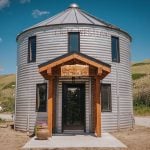Hens can be easily upset if things deviate from the expected norm, therefore they should never run out of feed once laying has begun. Taking this into account I built an efficient automatic feeder that is simple and inexpensive to construct.
Dimensions are flexible, but the one I built is 27 inches wide, 24 inches high and one 2×4 in depth. Other materials needed are two pieces of 1×6 27 inches long, 3/8-inch plywood for backing and front, 2x4s to go around the outer edge and an old door hinge, plus nails.
Read Also

Gentle treatments for pain in the neck
Heading toward year-end, people unknowingly tense up against the cold and busyness, causing neck pain that can often be treated with appropriate support and gentle mobility, athletic therapist Kathlyn Hossack says.
The objective is constant feed availability without overflow. I installed a 2×6 board angled 45 degrees at the base of the reservoir with the bottom an inch below the top line of the front-facing 2×4. This gives hens ample pecking room while feed is being gravity funnelled into the trough. No spillage, yet steady supply.
The 2×4 lid is attached on one end with an old door hinge. The weight is sufficient to keep it closed. I separated the tank into two sections to accommodate more than one type of feed simultaneously.
The photo shows an upper lip — the feeder may be attached to a wall and easily removed for cleaning. †














